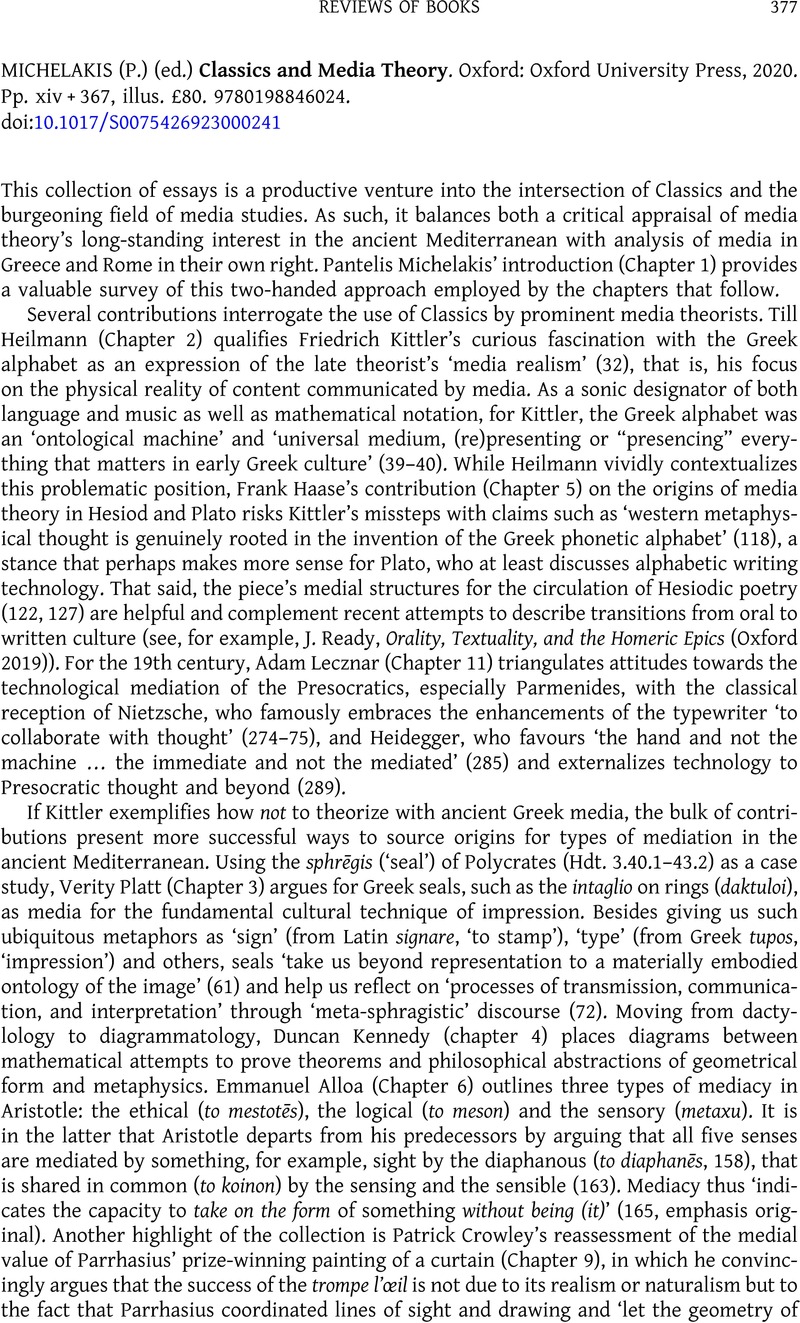No CrossRef data available.
Article contents
(P.) MICHELAKIS (ed.) Classics and Media Theory. Oxford: Oxford University Press, 2020. Pp. xiv + 367, illus. £80. 9780198846024.
Review products
(P.) MICHELAKIS (ed.) Classics and Media Theory. Oxford: Oxford University Press, 2020. Pp. xiv + 367, illus. £80. 9780198846024.
Part of:
Reception and history of scholarship
Published online by Cambridge University Press: 15 May 2023
Abstract
An abstract is not available for this content so a preview has been provided. Please use the Get access link above for information on how to access this content.

- Type
- Reviews of Books
- Information
- Copyright
- © The Author(s), 2023. Published by Cambridge University Press on behalf of the Society for the Promotion of Hellenic Studies


